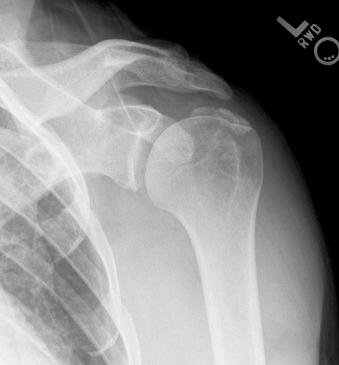Physical Address
304 North Cardinal St.
Dorchester Center, MA 02124
One of the most painful acute conditions affecting the shoulder is calcific tendinitis. Patients experience a sudden, atraumatic onset of severe pain that is present at rest and increases with any shoulder movement. The pain is often severe enough to cause the individual to present at a local emergency room or to demand immediate evaluation in the orthopedist's office. Patients often appear to be in distress and cradle the affected arm.
The cause of acute calcific tendinitis is not precisely known, but Uhthoff's analysis of the condition is the best. He considers calcific tendinitis a self-healing tendinopathy with a precalcifying phase during which a reduction in oxygen tension transforms a portion of the tendon into fibrocartilage. In this phase, chondrocytes mediate the deposition of calcium. Following the formative phase, the calcium may exist for an indefinite period and produce no symptoms. At some point, phagocytic cells accumulate around these calcium foci, and vascular proliferation occurs. The resorptive phase begins when these new vascular channels provide a pathway for resorption and restore normal perfusion and oxygen tension to the tissues. The acute pain begins with the resorptive phase. After the calcification is resorbed, the tendon is capable of normal function.
Ellman reported on a multicenter study of 131 patients treated arthroscopically. The average constant functional score was 69.4 of a possible 75. There was no correlation with the patient's age, the size of the calcification, or the duration of symptoms. Acromioplasty was not shown to be of any benefit. In contrast, Mole and colleagues reported that acromioplasty improved the outcome in their patients.
The diagnosis of calcific tendinitis is radiographic. Plain radiographs show single or multiple calcium deposits usually located in the supraspinatus tendon (65%). They also can occur in the infraspinatus (30%) or, more rarely, the subscapularis tendon (5%). The size, density, and location of the deposit must be evaluated closely to distinguish this condition from the dystrophic calcific densities, which occur incidentally in rotator cuff tendinosis. These findings are summarized in Table 16.1 and shown in Figs. 16.1–16.5 .
| Feature | Calcific Tendinitis | Rotator Cuff Tendinosis |
|---|---|---|
| Size | 5–15 mm | <5 mm |
| Location | 10–15 mm medial to greater tuberosity | Adjacent to tuberosity |
| Density | Less opaque | Dense |
| Character | Soft | Hard |





The shoulder is often swollen, and the overlying skin is sensitive to touch. The slightest pressure applied over the supraspinatus insertion may elicit severe pain. Active and passive range of motion is painful and restricted. Another cause of acute shoulder pain is cervical radiculopathy, and the surgeon should attempt to elicit a history of radicular pain or paresthesia, and carefully examine the patient for neck pain with neck motion. A review of the radiographs confirms the diagnosis. Owing to the persistent, severe pain, patients often present with a magnetic resonance image taken to evaluate the rotator cuff tendons. Diagnostic ultrasonography is an easy and effective method of diagnosis ( Figs. 16.6 and 16.7 ).


Become a Clinical Tree membership for Full access and enjoy Unlimited articles
If you are a member. Log in here